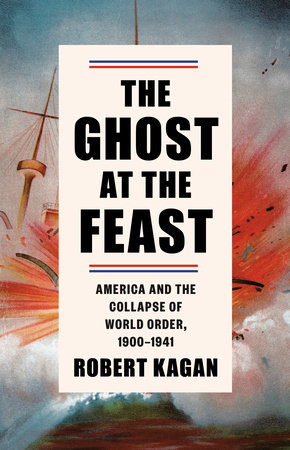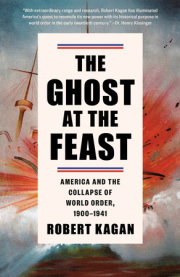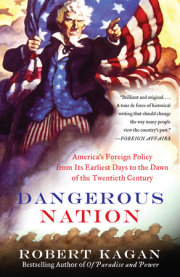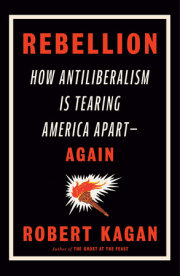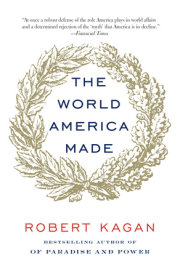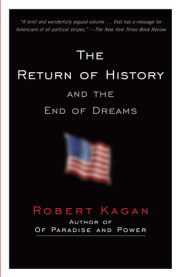Chapter one
A Tale of Two Wars
Now, we have fought a righteous war . . . and that is rare in history . . . but by the grace of that war we set Cuba free, and we joined her to those three or four free nations that exist on this earth; and we started out to set those poor Filipinos free too, and why, why, why that most righteous purpose of ours has apparently miscarried I suppose I never shall know.
—Mark Twain
The war with Spain that began in April 1898 is generally regarded as a great turning point in the history of American foreign policy, the moment when the United States became a “great power,” a “world power,” an “imperial” power. The great majority of Americans who supported the war, however, had no such ambitions. Intervention in Cuba did not seem to them a great deviation from their previous path. Cuba was an old issue, almost as old as the nation itself. Thomas Jefferson, John Quincy Adams, and other American statesmen of the early republic saw Cuba as a natural appendage of the growing country and assumed the island would eventually fall “like ripe fruit” into American hands. In the 1850s, southerners tried to purchase Cuba from Spain and make it the heart of a new slave empire in the Caribbean. During the long Cuban rebellion of the 1860s and ’70s, known as the Ten Years’ War, the U.S. government winked as private American citizens, many of them naturalized Cubans, lent financial and military support to rebels fighting to liberate the island from Spanish colonial rule. In 1873 the United States almost went to war when Spanish forces captured a retired Confederate warship, the Virginius, running guns to Cuba. When the Spanish executed the American captain and dozens of passengers, the Grant administration assembled the Atlantic fleet in the waters around Florida. Eventually, the Spanish government apologized, and Grant was not eager to go to war with the decrepit, outgunned American fleet of the time. The memory of the Virginius lingered in the popular imagination, however. Failed Cuban rebellions in 1879, 1883, 1892, and 1893 ensured that the struggle made news with some regularity.
The fighting that erupted in Cuba in 1895 caught Americans’ attention because it was especially brutal and destructive. This time the rebels, seeking to shake the pillars of Spanish colonial rule, went after the island’s economy, burning plantations and factories and driving thousands out of work. The Spanish government, with little money and too few troops to crush the rebellion, responded with measures as harsh as they were ultimately unproductive. A new general, Valeriano Weyler, inaugurated a counterinsurgency strategy aimed at isolating the rebels from the rural population. Farmers and their families were driven from their homes and herded into fortified towns and “reconcentration” camps with only what they could carry on their backs. Anyone found outside the camps was presumed a subversive and arrested or shot. Spanish soldiers scoured the countryside, burning villages and fields, destroying food stocks, slaughtering livestock, and razing homes. Eventually Weyler decreed a halt to all sugar production to prevent producers from paying bribes to the rebels. The Cuban economy ground to a halt.
The worst was yet to come. By the end of 1896, as the Cleveland administration was ending, Weyler’s reconcentration policies created a humanitarian catastrophe. The influx of some 300,000 displaced persons into the designated towns and makeshift camps overwhelmed municipal authorities and camp operators who lacked the food, supplies, medicine, sanitation, and manpower to care for them. Thousands lived on daily rice rations meant to feed hundreds. Cubans began to starve and succumb to disease. Hospitals were overwhelmed, lacking adequate staff, beds, and medicines. In the cities, bodies lay unburied in the streets; small children with bloated stomachs died searching garbage heaps for food. Over the course of a year at least 300,000 Cubans died—about one-fifth of the island’s population—and the deaths continued to mount.
Most Americans were on the rebels’ side from the beginning. From early 1896 on, Congress was flooded with petitions from peace groups, church groups, labor unions, and farmers’ associations calling for aid to the rebels and recognition of Cuban independence. When reports arrived of the mass starvation and disease, the popular outcry matched the response to the Armenian genocide two years before. Cuba was “our Armenia,” the editors at the San Francisco Examiner insisted. Even the conservative New York Times wrote that the “civilized world” had an interest in preventing such inhuman behavior “in Cuba as well as in Armenia.” Many Americans insisted that the United States must not “share the blood-guiltiness of Europe.”
Some hoped the United States could end the suffering by mediating between Spain and the Cubans, but many were prepared to use force if diplomacy failed. The newspapers of William Randolph Hearst and Joseph Pulitzer competed for readers by stirring up outrage with lurid and sometimes fanciful stories of Spanish barbarity, but the call for intervention also came from religious publications with an even broader circulation than the “yellow press.” The Christian theologian and editor Lyman Abbott saw it as a necessary act of Christian charity, “the answer of America to the question of its own conscience: Am I my brother’s keeper?” The suffragist and social activist Elizabeth Cady Stanton observed, “Though I hate war per se, . . . I would like to see Spain . . . swept from the face of the earth.” An editorial in The Evangelist proclaimed that if it was the “will of Almighty God” that only war could sweep away “the last trace of this inhumanity of man to man,” then “let it come!” William Jennings Bryan, the choice of six million voters in the 1896 election and the closest thing to a pacifist ever chosen to lead a major national party, led the cry for intervention. War was “a terrible thing,” he declared, but sometimes it was necessary when “reason and diplomacy” have failed. “Humanity” demanded that the United States act.
The popular response to the humanitarian catastrophe in Cuba did not fit the usual stereotypes. The foreign policy or establishment “elite” generally opposed intervention. The business community and its influential supporters in Congress worried that war would stall the economic recovery that had begun to gather steam at the end of 1896. The big investors in Cuban mines and plantations relied on the Spanish colonial authorities to protect their investments and rightly feared what the rebels would do to their investments if they won. President Cleveland himself regarded the rebels as “the most inhuman and barbarous cutthroats in the world.” The most enthusiastic support for intervention came from the “Bryan sections of the country,” from the populists and progressives who tended to view the Cuban conflict as a class war, akin to the struggle between workers and government-backed plutocrats in the United States. To them it made perfect sense that the Cleveland administration, which had ordered the U.S. Army to kill striking railroad employees during the Pullman strike in 1894, was now supporting the Spanish government as it killed farmers and workers in Cuba.
In his last two years in office Cleveland maintained strict neutrality as the conflict exploded, coolly ignoring the pro-Cuban resolutions emanating from Congress. He was aware of the breadth and depth of popular sentiment, however. In his last days as president, he urged the Spanish government to get control of the situation, warning that American patience was not infinite and that if Spain did not either bring the war to an end or stop its brutal policies, America’s desire to remain neutral in the conflict could be “superseded by higher obligations.” His secretary of state, Richard Olney, advised the Spanish government to make good on its promises of reform and grant Cuba some form of autonomy; he offered to help mediate. When Spanish officials refused, insisting that talks could only begin after the rebels surrendered, Cleveland privately predicted that the United States would be at war within two years.
This was the last thing the new president, William McKinley, wanted when he entered the White House in 1897. The long-serving member of Congress and, most recently, governor of Ohio had never taken a great interest in foreign policy except on matters of trade and had said little about it during his campaign. His overriding concern was the U.S. economy. He had run as the “advance agent of prosperity,” and, luckily for him, the economy had already begun to take off when he took office. In 1897 the stock market rose, business investment increased, farm prices climbed, farm exports rose, and iron and steel production reached new heights. War was a big risk to what still seemed a fragile recovery. In his inaugural address, McKinley said pointedly that “wars should never be entered upon until every agency of peace has failed.”
As the full magnitude of the humanitarian disaster among the reconcentrados began to unfold in 1897, however, McKinley found himself drifting toward conflict. He implored the Spanish government “in the name of common humanity” to change its tactics and relieve the island’s misery. He would have been content if the Spanish had simply put down the rebellion—like Cleveland, he had little sympathy for the Cuban rebel leaders and no interest in Cuban independence—but it was becoming clear that Spain simply lacked the capacity to end the war. The problem was compounded by the fact that the Madrid government also did not believe it could survive politically if it made any concessions either to the rebels or to the United States. Although a liberal government was temporarily in power, even Spanish liberals did not believe they could be seen giving away the “jewel in the crown” of the declining empire without a fight. As the American minister reported, they preferred “the chances of war, with the certain loss of Cuba, to the overthrow of the Dynasty.”
This left McKinley with two options: step back and let the war continue indefinitely, with all that entailed in terms of ongoing death and suffering; or step in and compel an end to the conflict. After several diplomatic go-rounds, in which Madrid yielded tactically but not on the main point of offering the Cubans a clear path to autonomy, McKinley decided he had no choice but to intervene. Two events increased public pressure for action. The first was the tragic explosion of the Maine in Havana harbor, which killed 260 American seamen on board and was widely if erroneously attributed to Spanish agents. The other was an insulting letter to Madrid from the Spanish ambassador, which was leaked to the Hearst press. McKinley insisted he would not go to war over either of these incidents—the Civil War veteran told friends he had already “seen the dead piled up” in one war and believed he had an obligation to resist pressure for an “avenging blow”—but he was pushed into declaring war sooner than he might have preferred.
On April 11, 1898, to thunderous applause in the House chamber, McKinley declared that “in the name of humanity, in the name of civilization, in behalf of endangered American interests which give us the right and the duty to speak and to act, the war in Cuba must stop.” In phrases redolent of the North’s justification for war with the South, he declared that it did not matter that the horrors were occurring “in another country, belonging to another nation.” It was, he insisted, “specially our duty, for it is right at our door.” In articulating a moral obligation to relieve suffering so close to American shores, the president at that moment spoke for the overwhelming majority of Americans—Republicans and Democrats, progressives, populists, labor leaders, and, at the very end, even conservatives and most businessmen.
Modern historians have tended to treat the American decision for war with a certain cartoonish condescension—Americans were “mad for war,” “lashed to fury,” falling “over each other . . . with a whoop and a holler” through “the cellar door of imperialism in a drunken fit of idealism.” Some argue that Americans were suffering from a mass “hysteria” brought on by some “psychic crisis,” that they went to war to relieve pent-up emotions, to distract themselves from economic difficulties or status anxieties, to resolve the North-South conflict, or to prove their manhood.
Yet Americans did not actually rush to war, and in the end it was not mass “hysteria” but a shift among conservative and moderate opinion that tilted the United States toward intervention. The turning point for many conservatives was not the sinking of the Maine but a speech on the Senate floor by the Vermont Republican Redfield Proctor. A successful businessman and former governor known for moderate views and for his close relationship with the president, Proctor traveled to Cuba in early March 1898 to see things for himself. He went “with a strong conviction that the picture had been overdrawn” by the yellow press, but what he saw changed his mind: thousands living in huts unfit for human habitation, “little children . . . walking about with arms and chest terribly emaciated, eyes swollen, and abdomen bloated to three times the normal size,” hundreds of women and children in a Havana hospital “lying on the floors in an indescribable state of emaciation and disease.” What moved him to support intervention, he said, was “the spectacle of a million and a half of people, the entire native population of Cuba, struggling for freedom and deliverance from the worst misgovernment of which I ever had knowledge.” After Proctor’s speech, even the nation’s more conservative newspapers came around to the view that the situation in Cuba was “intolerable,” and that it was America’s “plain duty” to intervene.
On April 25, the United States Congress authorized McKinley to use force. The war was over in ten weeks. Although there was hard fighting on land, the war began and ended with dramatic and decisive naval battles. On May 1, 1898, Commodore George Dewey, commanding the U.S. Asiatic Squadron, defeated a Spanish squadron at Manila Bay in a few hours with virtually no American losses. Two months later, on July 3, two American squadrons defeated a Spanish squadron in the battle of Santiago Bay. With both its fleets destroyed and the Spanish coast vulnerable to American attack, the Madrid government sued for peace. American losses were not insignificant for such a short war—385 men died in battle and another 2,000 died from disease, mostly contracted in poorly equipped training camps in Florida—but for a nation that could still remember losing that many soldiers in one hour of fighting during the Civil War, it felt like a low-cost affair.
John Hay called it a “splendid little war,” therefore, but not only because it was won so handily. It was also “splendid” because it had been fought for “the highest of motives.” Although it is impossible to measure how many lives were saved by American intervention, a reasonable guess would put the number in the tens of thousands. Nor did the humanitarian crisis end with the war. The Cuban population was in a desperate condition. Disease and famine were rampant. Municipal services, from medical care to sanitation, were nonexistent. Cities had been left “full of sick and starving people, the streets littered with dead horses and dogs,” stinking of human waste, while the island’s interior, according to American military observers, had become “almost a wilderness.”
Copyright © 2023 by Robert Kagan. All rights reserved. No part of this excerpt may be reproduced or reprinted without permission in writing from the publisher.

